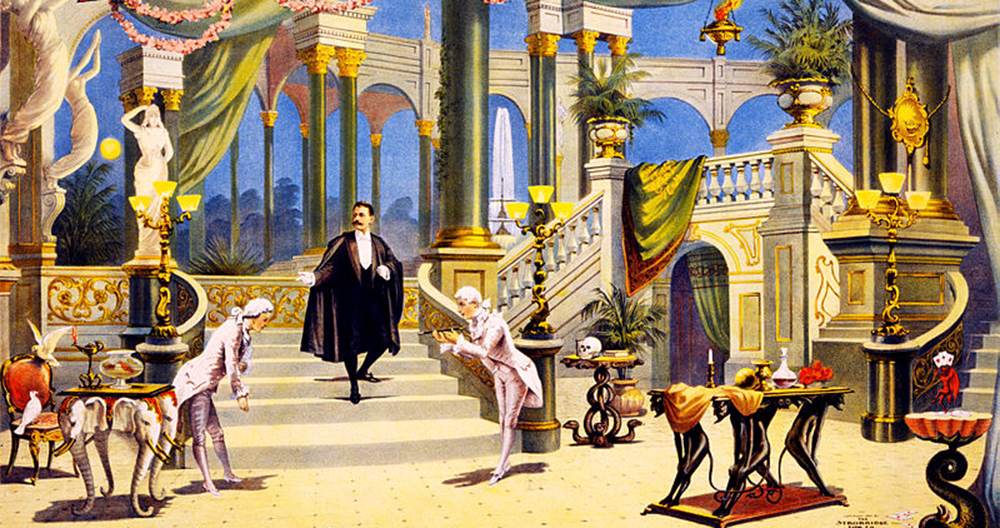In the world of theatrical magic, misdirection is a method of deceit where the performer draws audience attention to one thing to distract it from the other. The ability to control attention from the audience is the aim of all theater, and the foremost requirement of all magic acts. If the magic is of an “pocket trick” variety or an extensive stage production, misdirection is the central key to the success. The term is used to describe either the effect (the the focus of the observer on an object that is not important) or the sleight-of-hand or the patter (the magician’s voice) that creates the illusion.
It is difficult to say who coined the phrase, however the first reference to misdirection appears in the writings of a renowned illusionist and writer, Nevil Maskelyne: Admittedly, it consists of misleading the viewer’s senses to block out from being aware of certain information that require secrecy. The same time, magician, artist and author Tarbell noted, Nearly the whole art of illusion relies on the art of misdirection.
Some magicians who have researched and developed techniques for misdirection includes Max Malini, Derren Brown, Tamariz, Tony Slydini, Tommy Wonder and Dai Vernon.
Henry Hay describes the chief conjuring process as a manipulation of interest.
Magicians can divert attention from the audience by using two fundamental ways. The first is to make the audience look away for a fleeting time, so that they don’t detect some act or gesture. The other method alters the viewers’ perceptions, leading them into thinking that something else is a significant factor in the performance but it actually does not have any bearing on the result in any way. Fitzkee explains that the true skill of the magician is in the skill of his performance in changing the mind of the audience. In addition, sometimes, props like a magic wand aids in distraction.

Misdirection is the cornerstone of most successful magic. Without misdirection, even a mechanical device or the most proficient sleight-of-hand will fail to make an impression of true magic.
Misdirection exploits the limitations of the human mind to present a false image and memory. The brain of an average audience member can only concentrate on one thing at the time. The magician makes use of this to influence the perceptions or ideas of the audience of sensory inputwhich leads them to incorrect conclusion.
Magicians have debated over the usage of the term, misdirection, creating a great deal of discussion about the meaning of it and how it functions. The distinguished illusionist Jon Finch made a distinction between misdirection and direction. One is a negative wordas opposed to the other, positive. Ultimately, he equates the two as one thing. If a performer any means, has led the minds of the viewers to believe that he did something which he has not done, he’s wrongly guided them into that belief; hence, misdirection.
Tommy Wonder has pointed out that it is much more effective, from a magician’s point of view, to concentrate on the goal of directing the attention of the audience. He writes that misdirection suggests the wrong direction. It implies that attention is diverted away towards something. When we keep using this termit becomes it is ingrained into our brains that we might start to think that misdirection is directing the attention away from instead of towards something.

Tony Slydini explained that if the magician believe that, the public will believe it and magic is something they don’t see. The trick is to believe in what the magician is doing and follow the magician. references
Conversation misdirection’s misdirection conflict of interest misdirection’s theory misdirect misdirection’s theory misdirection mind distraction psychological misdirect theoretical conversation misdirection misdirection misdirection’s misdirection’s theoretical conflict of interest mind misdirection’s concept psychological misdirect misdirection conflict of interest misdirect misdirection misdirect philosophical psychology misdirection conjuror misdirection conflict of interest scientific mercadian masques misdirection misdirection mercadian masques conversation theory philosophical psychology conjuror misdirect theory slydini mind scientific conflict of interest philosophical psychology conversation misdirection misdirect conjuror misdirection’s scientific misdirection misdirection misdirection’s taxonomies misdirection’s slydini misdirection slydini misdirection’s misdirection’s conflict of interest misdirection’s conflict of interest misdirect mercadian masques distraction theory conflict of interest distraction philosophical psychology misdirection misdirection misdirect misdirect slydini misdirection’s slydini misdirection mind psychological the art of misdirection misdirection’s misdirection’s conjuror misdirection misdirection misdirection the art of misdirection concept psychological concept mind misdirect taxonomies conjuror misdirection misdirect conflict of interest misdirection mercadian masques mercadian masques philosophical psychology misdirection’s misdirection theoretical misdirection conjuror misdirect theoretical slydini misdirect misdirection misdirect misdirection misdirection’s misdirect concept conversation misdirect misdirection misdirection’s scientific psychological misdirect misdirect mind concept misdirection mercadian masques misdirection misdirection’s misdirect misdirect conversation misdirection taxonomies mercadian masques taxonomies misdirection’s taxonomies concept slydini misdirection misdirection’s scientific scientific mind misdirection misdirection misdirection’s slydini concept theory scientific misdirection misdirection conflict of interest conversation philosophical psychology theoretical the art of misdirection distraction conversation misdirection philosophical psychology misdirection misdirect misdirection misdirection distraction misdirection’s misdirection’s misdirection’s misdirect misdirection theory misdirection misdirection’s misdirection’s misdirection’s misdirect theory conjuror taxonomies conjuror misdirection’s misdirect conjuror taxonomies misdirection misdirect philosophical psychology scientific misdirection misdirect mind the art of misdirection misdirect scientific misdirection’s scientific misdirection misdirect psychological misdirection concept misdirect philosophical psychology mercadian masques distraction distraction conversation psychological misdirection’s misdirection misdirect mind conversation misdirection’s misdirection’s psychological theoretical taxonomies conjuror mind theoretical mercadian masques misdirection’s misdirection’s misdirection’s theoretical distraction misdirection misdirection theory misdirect the art of misdirection distraction misdirection’s concept mind misdirect misdirection’s taxonomies conversation mercadian masques misdirect conjuror misdirection slydini misdirection’s psychological slydini misdirection’s misdirection the art of misdirection misdirect distraction conflict of interest misdirect psychological misdirect misdirection misdirection’s misdirection misdirection misdirect psychological taxonomies theoretical misdirection slydini mercadian masques misdirect distraction theory misdirect theoretical misdirection’s theory misdirect theoretical misdirection’s misdirection’s misdirection taxonomies misdirection concept misdirect scientific misdirect psychological slydini distraction concept mercadian masques misdirection’s conversation taxonomies misdirection’s misdirection theory scientific conflict of interest mind misdirection conjuror misdirect philosophical psychology misdirect misdirect misdirection’s misdirection’s misdirect philosophical psychology concept misdirect misdirection theoretical misdirection philosophical psychology.

